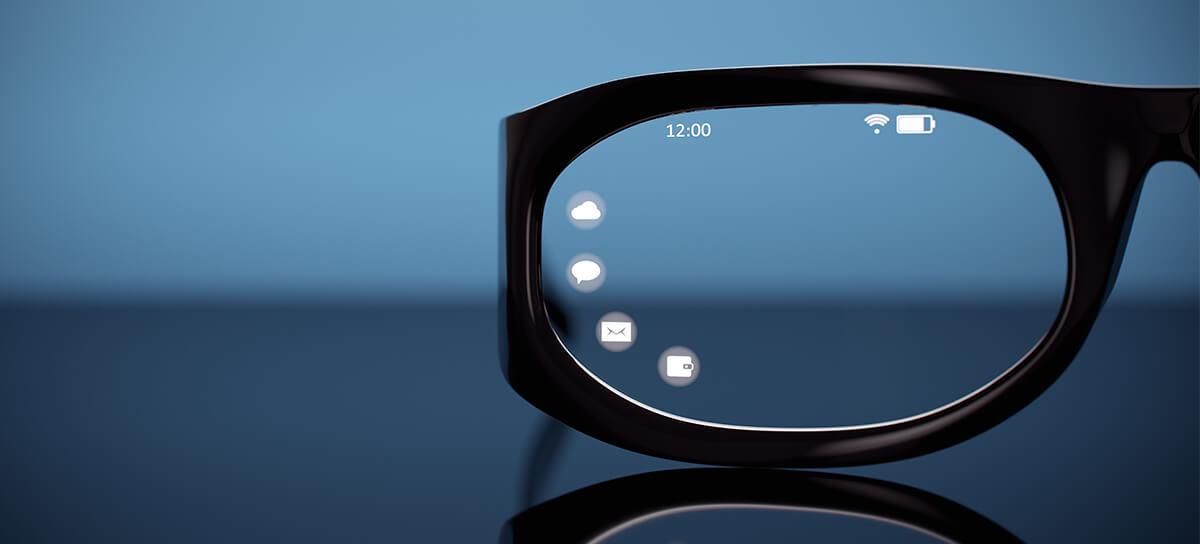Firmware Development for Augmented Reality Glasses
Background
Virtual and augmented reality technologies are rapidly transforming not only the gaming industry but also professional fields, from healthcare to aerospace systems. These tools make it possible to visualize complex data in real time, model scenarios, and interact with digital objects in physical space.
Developing AR glasses requires unconventional engineering solutions. It is crucial to synchronize software with hardware components and adapt the device to specific tasks. Projects like these, which combine innovations in software development, optics, and microelectronics, are setting new standards for the entire industry. They demonstrate how VR/AR technologies are moving beyond the consumer segment to address global challenges.

Request
The customer’s company designs optical systems and electronics for the aerospace industry, along with virtual and augmented reality solutions. They were working on a new model of Android-based smart glasses and designed the hardware part. However, they lacked skills to develop the necessary software, so our team joined the project.
Integra Sources was assigned the following tasks:
- Develop a driver for the accelerometer and gyroscope.
- Develop a video driver to control the glasses’ displays.
The project requirements were as follows:
- Support for an 8-bit greyscale mode;
- Real-time image contrast adjustment;
- Support for calibration tables to adjust brightness;
- Support for pixel mapping tables;
- Support for 4 displays simultaneously.
Solution
We developed a driver for the accelerometer and gyroscope that supports data transmission via the I2C protocol.
The client’s team used a standard display controller in their device which is compatible with a Raspberry Pi driver. We used it as a basis for creating the custom driver for the customer. Our developers added the capability to transmit data to four displays simultaneously and to adjust image contrast in real time within a range from 0 to 255.
Since Android operating systems do not allow applications to interact directly with drivers, we were also required to develop a HAL (Hardware Abstraction Layer) module. HAL is a software layer that acts as an intermediary between user applications and the driver. It provides Android applications with a convenient interface for interacting with hardware and translates their calls into commands that the driver can understand, and thus directly control the display.
We built a custom OS image based on the Android Open Source Project, incorporating the developed driver and HAL module into it.
Major Issues Resolved
Bypassing the Linux Security System
The smart glasses are designed as a closed device: no access to the firmware, no ability to install applications on it. They were intended for corporate clients, not for the mass market. Therefore, the advanced functionality of SELinux—the built-in security system that controls application and module access to OS resources—seemed excessive. So, we disabled it to speed up development and reduce the costs.
8-bit Mode and Performance
The device used customized displays that operate in 24 bits per pixel mode by default but don’t have a color mask. To ensure the image is displayed correctly on such screens, it was necessary to implement support for an 8-bit grayscale mode in the driver.
We also paid special attention to optimizing the software performance to enhance the device’s speed and responsiveness. The requirement was at least 10 fps, but the team managed to achieve an average frame rate of 20 fps while operating four displays simultaneously.
Pixel mapping tables
Due to the specifics of the device’s optical system, it was necessary to implement support for pixel mapping tables in the driver.
Scope of Work
- Accelerometer and gyroscope driver development
- Video driver development
- HAL module creation
- Android Open Source Project customization
Technologies
- The C language for driver development.
- C++ and Java for the HAL module creation.
Result
Thanks to our expertise, the customer was able to complete the firmware for their augmented reality glasses, meeting all stated requirements: multiple color modes support, simultaneous operation of four displays, real-time contrast adjustment, and calibration tables integration.
With Integra Sources’ support, the client:
- Compensated for the lack of domain expertise and accelerated device development by several months;
- Obtained reliable software fully compatible with the hardware platform and Android specifics, which improved the stability of the device;
- Was able to exceed the expected performance: 20 fps instead of required 10 fps.
Integra Sources helped the customer speed up the development of the new device, while our team gained experience working with an interesting cutting-edge technology. The delivered solution lays the foundation for the client’s further product development in the field of high-tech electronics.
You might also like...

Software for EEG System
The Integra Sources team developed energy-efficient embedded software and an SDK for a medical EEG system. We delivered robust data transfer and storage, implemented multitasking on FreeRTOS, and improved connection security. 
LEARN MORE 

Remote-Controlled Aroma Diffuser for Perfume Stores
The customer was looking for developers with a high level of expertise and experience in IoT systems. Integra Sources met these criteria. We created a range of software solutions for the client’s product. 
LEARN MORE 



